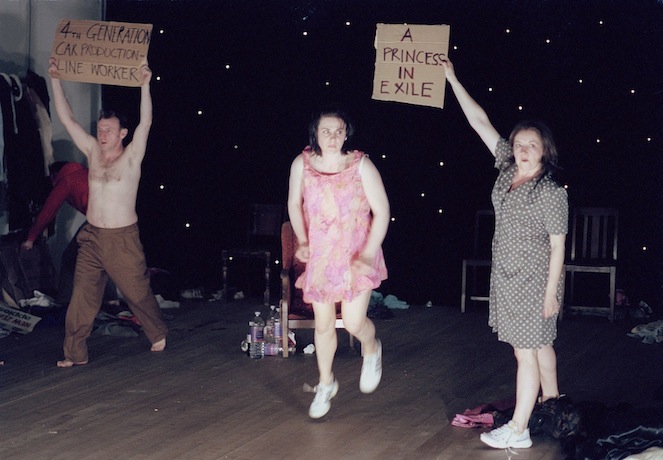Suggested Donation
This is an extract from an interview with Tim Etchells, Artistic Director of Forced Entertainment – read the full interview here.
We have a questioning attitude to story and storytelling – especially since we don’t make work that’s particularly character or narrative based. It’s not that there is an objection to story as such, it’s just that we have an understanding of story as one of the ways that theatre tends to organise itself, not the only one. Literary theatre often ties it’s meaning to narrative structures – neat and argumentative, where we’ve always been interested in structures that are more like music or architecture, structures in the work that are more like pattern or emotional journey or textural journey. In many ways our work has as much in common with dance or music or visual art performance as it does with theatre, if you think of theatre as literary theatre.
That said, I think very often we’ve dealt with story as a material but we’ve tended to think about story pluralistically: why do you only have to have one?! I think a lot of our work is based on the idea that what you’ve got on stage is a machine for generating many stories or different possibilities for stories. One of the things that the audience is doing I think is linking things together and making connections. Some of the pieces we have made have a raw material that is very narratively charged and we work by combining and recombining that material. I’m thinking about relatively early but quite important works like Club of No Regrets or 12am: Awake & Looking Down. The latter has hundreds of named characters who’s names are written on cardboard placards and the performers change costumes constantly and appear as all these characters. It’s theatre as dressing up box. There’s no story but in a sense, as all of these figures move past each other, a kind of kaleidoscopic narrative happens: Elvis Presley goes this way and A Nine Year Old Shepherd Boy goes that way and just for one moment you’re thinking, “On what mountain side did they meet?” And then it’s gone. I think we like that idea of the stage as a space that generates story but we don’t like to get locked into telling one.
E.M. Forster gives a great bit of advice to novelists which is “only connect”. Of course we have time for that impulse but I think we’re also interested in the idea of ‘also disconnect’. What happens when you put things down on the stage that don’t belong together and leave them like that? As an audience or watcher you’re then forced to somehow reconcile those things.



